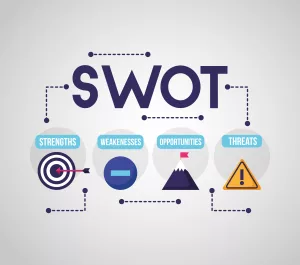Starting a nonprofit organization in Ohio can be a rewarding way to give back to your community. This comprehensive guide provides a step-by-step process, from defining your mission to securing necessary permits, to help you navigate the intricate path of establishing and successfully running your own nonprofit in Buckeye State.
1 – Define Your Mission
Every successful nonprofit begins with a clear, concise mission. Your mission is the driving force behind your organization. It defines the organization’s purpose and serves as a beacon for all stakeholders, including donors, volunteers, staff, and beneficiaries. A well-defined mission guides the strategic planning and daily operations, ensuring that every action aligns with the organization’s ultimate goal.
Identify the Needs Your Nonprofit Will Address
Before crafting a mission statement, you must first identify the needs your nonprofit will address. This process starts with thorough research to understand the social, educational, health, or other issues that your nonprofit aims to tackle.
Begin by asking questions like:
- What problem or need will your nonprofit address?
- Who is affected by this problem?
- Is there an underserved population or neglected issue that your organization could serve?
Drafting Your Mission Statement
Once you have a clear understanding of the needs you aim to address, it’s time to draft your mission statement. This is a succinct, clear expression of your organization’s purpose and goals. It should explain why the organization exists, who benefits, and what change or outcome you hope to achieve.
For example, if your nonprofit aims to address homelessness in Ohio, a mission statement could be: “To provide shelter, support, and resources to the homeless population in Ohio, with the goal of helping individuals achieve independence and security.”
Keep in mind, your mission statement should be easy to understand, compelling, and inspiring. It should resonate with your intended audience and differentiate your organization from others in the same field.
Role of a Mission Statement
The mission statement plays a crucial role in guiding an organization’s decisions. It serves as a framework for organizational strategies, helping to direct resource allocation and influence fundraising and marketing tactics.
When considering a new initiative or program, the first question should always be, “Does this align with our mission?” If the answer is no, it’s likely not an initiative your nonprofit should pursue.
In addition, your mission statement plays a key role in public perception. It is often the first thing potential donors, volunteers, and beneficiaries learn about your organization, so it should clearly convey what your organization does and why it matters. By staying true to your mission, your nonprofit can maintain credibility, foster trust, and inspire support in your community.
2 – Laws and Regulations for Nonprofits in Ohio
In Ohio, nonprofits are governed by the Ohio Revised Code (ORC), specifically, Title 17, which outlines the rules and regulations regarding incorporation, board governance, and dissolution procedures.
Operating a nonprofit organization in Ohio involves adhering to the rules and regulations outlined in the ORC. These rules govern various aspects of your organization’s operations and ensure the integrity of nonprofit operations and the appropriate use of funds. Here are some key legal considerations for Ohio nonprofits:
1. Incorporation Laws
According to the ORC, a nonprofit must be organized for a lawful purpose, and the creation of private profit is strictly prohibited.
2. Nonprofit Governance
The ORC also states that the organization must have a board of directors. The number of directors, their qualifications, and terms of office should be outlined in the nonprofit’s articles of incorporation or bylaws.
3. Fundraising and Transparency Regulations
Fundraising and transparency are two fundamental pillars of running a successful nonprofit. Understanding and adhering to the associated regulations is crucial not only for compliance with the law but also for maintaining public trust and donor confidence.
Fundraising Regulations
Nonprofits in Ohio, like in many states, must follow certain regulations when soliciting donations:
- Charitable Solicitation License: If your nonprofit intends to solicit donations from the public, you will need a charitable solicitation license from the Ohio Attorney General’s Office. This license requires annual renewal, so it’s essential to keep track of the renewal dates.
- Fundraising Professionals: If you plan to use professional fundraisers, they must also register with the Ohio Attorney General’s Office before soliciting donations.
- Fundraising Disclosures: When soliciting donations, your nonprofit is required to disclose certain information, including its name, the fact that it is registered with the Attorney General, and whether the donation is tax-deductible.
Transparency Regulations
Transparency is a significant factor in ensuring public trust and integrity in the nonprofit sector. Here are the key requirements for Ohio nonprofits:
- Financial Reporting: Nonprofits must provide an annual financial report to the Ohio Attorney General. This report should detail revenue, expenses, and other relevant financial information.
- Public Access to Information: As a nonprofit, your organization is required to make certain documents available to the public. This includes your Form 990, which is a tax form that provides information about your nonprofit’s finances and operations.
- Conflict of Interest Policy: It’s a best practice to adopt a conflict of interest policy to manage potential conflicts among board members and staff. This policy should be reviewed regularly and updated as needed.
Understanding and adhering to these fundraising and transparency regulations will help ensure your nonprofit operates legally and ethically, maintaining the trust of the public and your donors. The regulations may seem complex at first, but with careful planning and diligent implementation, they can become an integral part of your organization’s successful operation.
4. Employment Laws
Nonprofits in Ohio must also comply with both federal and state employment laws. This includes complying with minimum wage laws, overtime laws, and anti-discrimination laws.
3 – Choose a Name
Choosing a unique name for your nonprofit is crucial. It identifies your organization and helps establish its brand. The name should reflect the organization’s mission and core values, helping to connect and resonate with potential donors, volunteers, and the community you aim to serve.
How to Check for Name Availability in Ohio
Before deciding on a name, you need to ensure it’s not already in use. In Ohio, you can check the availability of a business name through the Ohio Secretary of State’s online business search tool. This tool allows you to search a database of all registered entities in the state.
Legal Restrictions on Nonprofit Names
In Ohio, there are legal restrictions on business names, including those of nonprofits. For instance, your nonprofit’s name cannot be misleading or suggest that it’s part of a government agency. It also can’t be identical or deceptively similar to the name of another existing business entity registered in the state.
Reserving Your Chosen Name
Once you’ve chosen a unique name that complies with Ohio’s regulations, you should reserve it. You can do this by filing a Name Reservation with the Ohio Secretary of State. This reservation will protect the name for a specified period, ensuring no other entity can register it during that time.
4 – Create Bylaws
Once you’ve selected a unique and representative name for your nonprofit, the next vital step is to establish your organization’s bylaws. Bylaws are legally binding documents that serve as the internal rules and regulations governing an organization’s operations. For a nonprofit, the bylaws function like a constitution or guiding document, offering a detailed description of the organization’s structure and procedural operations.
These bylaws ensure consistency and structure in your organization’s operation, helping to prevent any potential misunderstandings or conflicts. Bylaws are important for a few key reasons:
- Structure: They provide a clear framework for the organization’s operations, defining roles, responsibilities, and procedures.
- Regulation: They ensure compliance with federal, state, and local laws.
- Conflict Resolution: They provide a roadmap for resolving disputes or conflicts within the organization.
- Transparency: They establish a clear, transparent, and accountable way for the organization to operate, which can increase trust among stakeholders and the public.
- Legal Protection: They can provide legal protection for the organization and its board of directors in the event of legal disputes.
Essential Elements
A comprehensive set of bylaws should include the following key elements:
- Name and Purpose: This section should include the official name of the nonprofit and its mission statement, outlining its purpose and objectives.
- Membership: If your nonprofit has members, the bylaws should outline the qualifications for membership, rights and responsibilities of members, the process for admitting and removing members, and details of membership dues.
- Board of Directors: In this section, outline the board’s size and qualifications, the terms of service for directors, the methods for their election or appointment, their specific roles and responsibilities, and the processes that facilitate the removal of directors.
- Officers: This part should elaborate on the roles of the officers, such as the President, Secretary, and Treasurer, their duties, their election or appointment methods, their term durations, and the procedures for their removal and replacement.
- Committees: Here, outline the various committees within the organization, the responsibilities they shoulder, and the process through which members are appointed.
- Meetings: Detail the frequency of meetings, the method for their initiation, the individuals with the authority to call a meeting, the definition of a quorum, the voting procedures, and the guidelines for special meetings.
- Conflicts of Interest Policy: To maintain ethical standards and avoid potential legal problems, it’s crucial to include a conflict of interest policy.
- Amendments: Provide a process for amending the bylaws, including who can propose amendments and how votes on amendments will be conducted.
- Dissolution: Outline the process for dissolving the nonprofit, including how assets will be distributed in line with state and federal law.
Legal Requirements
The Ohio Revised Code (ORC) mandates that all nonprofits in Ohio establish bylaws, although it doesn’t dictate their specific contents. It does, however, necessitate that these bylaws don’t contain anything inconsistent with the law or the nonprofit’s articles of incorporation. Additionally, the ORC prescribes certain procedures concerning the nonprofit’s governance, which should be incorporated into the bylaws.
For instance, ORC section 1702.11 states that the bylaws should provide for the number of directors and the manner of their election or appointment. Ohio law also mandates certain provisions for meetings, voting, and the appointment of officers.
It’s important to note that nonprofits in Ohio must also comply with federal laws, particularly if they are seeking tax-exempt status from the IRS. This includes having specific language in the bylaws regarding the nonprofit’s purpose, conflict of interest policy, and dissolution process.
Legal Help
The role of an attorney is critical in crafting and reviewing bylaws. They bring expertise in state, local, and federal law and can ensure that the bylaws are compliant with all legal requirements. This can prevent legal problems down the road.
An attorney can also provide advice on best practices for nonprofit governance, helping to craft bylaws that not only meet legal requirements but also support the effective and efficient operation of the organization.
In addition, an attorney can assist with the process of amending the bylaws in the future, providing legal oversight to ensure that any changes are made in accordance with the law and the existing bylaws.
5 – Form a Board of Directors
Once you’ve carefully drafted your bylaws, the next significant step in the process is to form your board of directors. A board of directors plays a key role in the governance of a nonprofit. They’re responsible for guiding the organization’s mission and strategic direction. They oversee financial management and approve budgets. Their role also includes policy-making and hiring, evaluating, and if necessary, firing the chief executive.
Legal Requirements for Board Composition
Ohio nonprofit law (Ohio Revised Code Section 1702.30) requires a minimum of three directors on the board. There’s no maximum limit set by the law. There’s also no legal requirement for directors to be residents of Ohio unless specified in the organization’s bylaws.
How to Select Board Members
Choosing board members requires careful consideration of individuals’ skills, experiences, and commitment to the organization’s mission. Aim to build a diverse and balanced board. Recruit from different fields such as law, finance, marketing, and others relevant to your nonprofit’s work. You may also want to consider aspects like age, gender, ethnicity, and community representation to ensure broad perspectives.
Establishing Terms of Service
Establishing terms of service for board members involves setting their duration of service and roles in the bylaws. Ohio law doesn’t specify term lengths. However, it’s common to have terms ranging from one to three years. You can allow for re-election after a term ends, but it’s wise to set term limits to allow new ideas and perspectives on the board.
Succession Planning for the Board
Succession planning is crucial for maintaining continuity in leadership. This process involves identifying potential future leaders among existing board members or outside individuals. It includes mentoring and providing leadership training to potential successors. It’s also beneficial to have overlapping terms, so new board members can learn from experienced ones. This plan should be reviewed and updated regularly. In case of unexpected vacancies, having a robust succession plan ensures a smooth transition and continued functioning of the board.
6 – File a Certificate of Incorporation
A Certificate of Incorporation, known as Articles of Incorporation in some regions, is vital to a nonprofit’s creation. It serves a dual purpose: legalizing the nonprofit’s existence and granting it certain legal protections and rights, thereby laying the groundwork for the organization’s operations and growth.
Required Information
- Name of the Corporation: This is the official, legal name under which your nonprofit organization will operate. It must be unique and should not infringe on the names of existing entities.
- Location of the Corporation’s Principal Office: This refers to the primary physical location where your nonprofit conducts its operations.
- Statement of the Nonprofit’s Purpose: This clearly articulates the specific mission or purpose that your nonprofit organization is committed to advancing. This statement should be clear and concise, outlining the causes or communities your nonprofit intends to serve.
- Duration of the Corporation: This refers to the lifespan of your nonprofit. Typically, this is stated as “perpetual”, meaning that the organization is intended to operate indefinitely.
- The Manner in Which Directors are Appointed or Elected: This outlines the process for selecting members of your nonprofit’s board of directors, as established in your bylaws.
- Name and Address of the Corporation’s Registered Agent: A registered agent is a person or entity authorized to receive official legal documents on behalf of your nonprofit. This must include a physical address in the state of Ohio.
- Names and Addresses of the Incorporators: Incorporators are the individuals involved in the formation of the nonprofit. They sign and submit the articles of incorporation.
- Statement that the Corporation is Nonprofit: This is a formal declaration that the organization is a nonprofit, which means it’s dedicated to furthering a particular social cause or advocating for a shared point of view, rather than seeking to distribute profits to members, directors, or shareholders.
By including all of these key details in your Certificate of Incorporation, you help to ensure the legitimacy and credibility of your nonprofit organization in the eyes of the law and the public.
Filing Process
To file the Certificate of Incorporation in Ohio, follow these steps:
- Complete Form 532A – Articles of Incorporation for a Nonprofit Corporation, available on the Ohio Secretary of State’s website.
- The completed form must be submitted either online, by mail, or in-person to the Ohio Secretary of State’s office.
- Along with the form, you must submit a cover letter including your name, mailing address, and daytime phone number.
Timeline for Obtaining a Certificate of Incorporation
Once the fee is submitted, normal processing times can vary, but typically, you can expect your Certificate of Incorporation to be processed in 3-7 business days. Expedited services can process the form in 2 business days or even on the same day, depending on the level of service requested.
Please verify this information from the Ohio Secretary of State’s website or contact them directly as fees and processing times may have changed.
7 – Obtain EIN
After filing your Certificate of Incorporation, the next crucial step involves obtaining an Employer Identification Number (EIN). This unique nine-digit number, assigned by the Internal Revenue Service (IRS), serves as a Social Security number for your organization, allowing the IRS to identify your nonprofit for tax reporting purposes. Securing an EIN is not just a matter of legal compliance; it’s also essential for various aspects of managing your nonprofit.
Steps to Apply for an EIN
- Determine eligibility: Your organization must be located in the U.S. or U.S. territories and the person applying online must have a valid Taxpayer Identification Number (Social Security Number, Employer Identification Number, or Individual Taxpayer Identification Number).
- Visit the IRS website: Go to the IRS EIN application page on the IRS website.
- Fill out the application: The online EIN application must be completed in one session, as you cannot save and return to it later.
- Submit the application: After all the information is filled in, submit the application. If the information is validated, you will immediately receive your EIN.
Expected Timeline
The best part about obtaining an EIN is that it’s free of charge. When you apply online, you can get your EIN immediately. If you choose to apply by fax or mail, it can take up to four business days or four weeks respectively.
Using the EIN in Managing Your Nonprofit
The EIN plays a pivotal role in the various management aspects of your nonprofit. Not only is it required for filing annual tax returns—even for tax-exempt organizations—but it’s also indispensable when applying for tax-exempt status. Moreover, the EIN is essential for operations like opening a bank account under the organization’s name, applying for necessary permits and licenses, and setting up payroll for your employees.
8 – Apply for Tax Exemption
Once your Certificate of Incorporation is successfully filed, it’s time to move on to the crucial stage of applying for tax exemption. This significant step in your nonprofit’s journey allows you to gain exemption from federal and potentially state taxes. By achieving tax-exempt status, your organization can direct more resources towards its mission. The procedure involves seeking 501(c)(3) status at the federal level from the IRS and applying for relevant state tax exemptions. It’s a detail-oriented process, requiring meticulous attention to successfully benefit from the exemptions.
Overview of Federal 501(c)(3) Tax-Exempt Status
A 501(c)(3) organization is a tax-exempt nonprofit organization in the United States, as defined by section 501(c)(3) of the Internal Revenue Code. There are several benefits to achieving this tax-exempt status:
- Income Tax Exemption: The nonprofit organization is exempt from federal income tax on its activities related to its nonprofit purpose.
- Tax-Deductible Contributions: Donations made by individuals to the nonprofit are tax-deductible, which can encourage more and larger contributions.
- Access to Grants and Funding: Many foundations and government agencies only give grants to 501(c)(3) organizations.
- Reduced Postal Rates: The organization may qualify for lower postal rates on third-class bulk mailings.
Applying for Federal Tax-Exempt Status
To apply for 501(c)(3) tax-exempt status, a nonprofit organization needs to file Form 1023 (or 1023-EZ, the streamlined version for smaller organizations) with the Internal Revenue Service (IRS). Here are the general steps involved:
- Complete Form 1023 or 1023-EZ: The form requires detailed information about your organization’s purpose, financial data, governance structure, operational information, and compliance with certain legal requirements. It’s crucial to provide thorough and accurate information in this step.
- Submit the Application: Pay the filing fee and send the application to the IRS either through mail or online submission.
- Await Determination: After submitting your application and user fee, the IRS will review your submission. This process can take between 3 to 12 months, depending on the complexity of your application and the IRS’s backlog. If your application is approved, the IRS will send you a determination letter stating that your organization is tax-exempt under section 501(c)(3).
State Tax-Exempt Status in Ohio
In addition to federal tax exemption, nonprofits in Ohio may also be eligible for state tax exemption. This often includes exemption from sales and use taxes, property taxes, and income taxes.
To apply for state tax exemption in Ohio, you must first obtain your federal 501(c)(3) status. Then, you can apply for exemption from Ohio sales and use taxes by completing Form STEC NP, “Sales and Use Tax Blanket Exemption Certificate.”
For property tax exemption, you’ll need to file a DTE Form 23, “Application for Real Property Tax Exemption and Remission,” with the county auditor’s office.
Remember, each state’s tax laws are different, so it’s important to understand Ohio’s specific rules. It’s also advisable to consult with a tax professional or an attorney. They will ensure you understand all the tax implications and responsibilities of your nonprofit organization.
9 – Obtain Necessary Licenses and Permits
Like any organization, nonprofit organizations are required to have certain licenses and permits to operate legally. This can include a general business license, specialized permits for certain types of activities, and licenses related to fundraising efforts.
Overview of Potential Licenses and Permits
While nonprofits in Ohio are exempt from some regulatory requirements, there are still several types of licenses and permits that your organization might need. Some common ones include:
- General Business License: This allows you to conduct business in the state of Ohio. This license is typically required regardless of your organization’s tax-exempt status.
- Specialized Permits: Depending on your organization’s activities, you may need additional permits. For example, if your nonprofit operates a thrift store, you may need a retail sales license. If you provide medical services, you may need health department permits.
- Charitable Solicitation License: If your nonprofit plans to solicit donations from the public, you will likely need a charitable solicitation license from the Ohio Attorney General’s Office.
Determining Necessary Licenses and Permits
Determining which licenses and permits are required can be a complex process as it depends on several factors. Here are the steps to identify the necessary licenses and permits:
- Evaluate Activities: Look at what types of activities your nonprofit will be engaged in. Will you be selling goods or services, hosting events, or fundraising? Each of these can carry its own requirements.
- Check State Regulations: Visit the Ohio Business Gateway and Ohio Department of Taxation websites. These sites provide comprehensive information about the types of licenses and permits required for different activities in Ohio.
Applying for Licenses and Permits
Once you’ve determined which licenses and permits you need, the next step is to apply for them:
- Ohio Business Gateway: This online system allows you to apply for many of the necessary state licenses and permits.
- Local Permits: Some permits, such as zoning permits, are usually obtained at the local level. You’ll need to contact your local city or county government offices for these.
- Charitable Solicitation License: To apply for this license, you need to register with the Ohio Attorney General’s Office.
Despite the complexity of this process, it’s crucial to secure all necessary licenses and permits for your nonprofit. This not only fulfills your legal obligations but also maintains the trust of your donors and the public.
Conclusion
Embarking on the journey of starting a nonprofit in Ohio can be a fulfilling venture. As you navigate this path, remember that each step, from defining your mission to obtaining necessary licenses and permits, contributes to the establishment of an organization that can make a significant impact on your community. With diligence, patience, and dedication, you can turn your vision of service into a functioning and thriving nonprofit.



